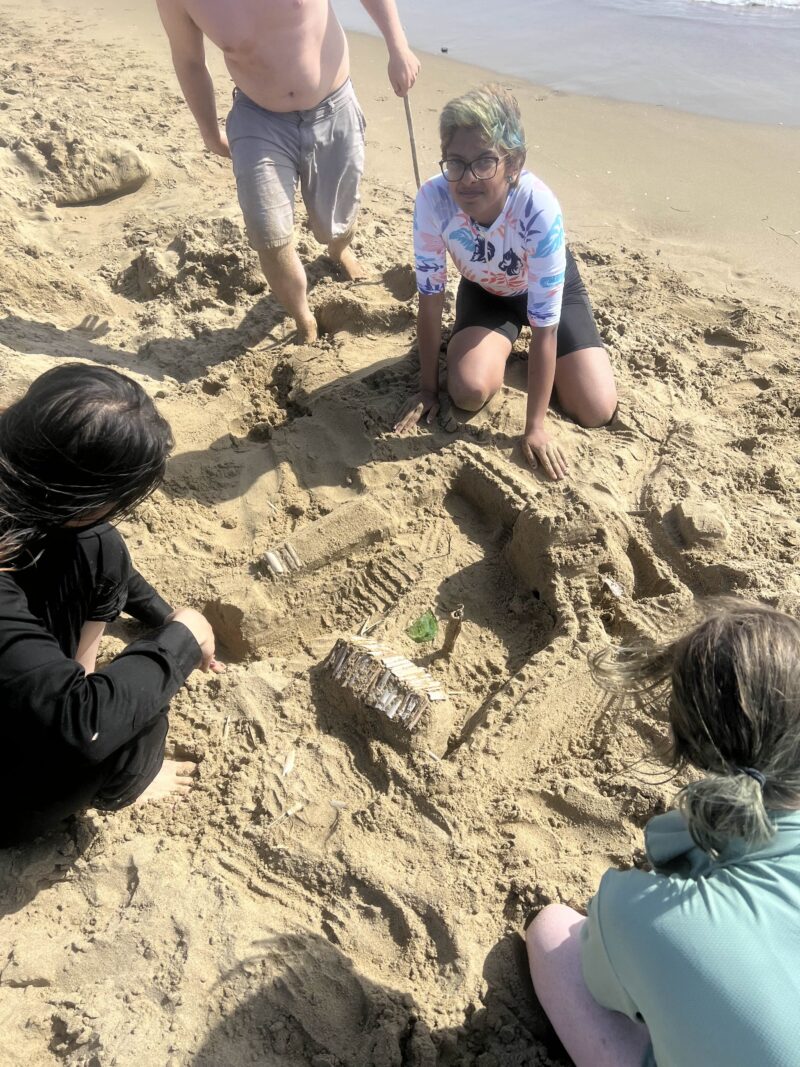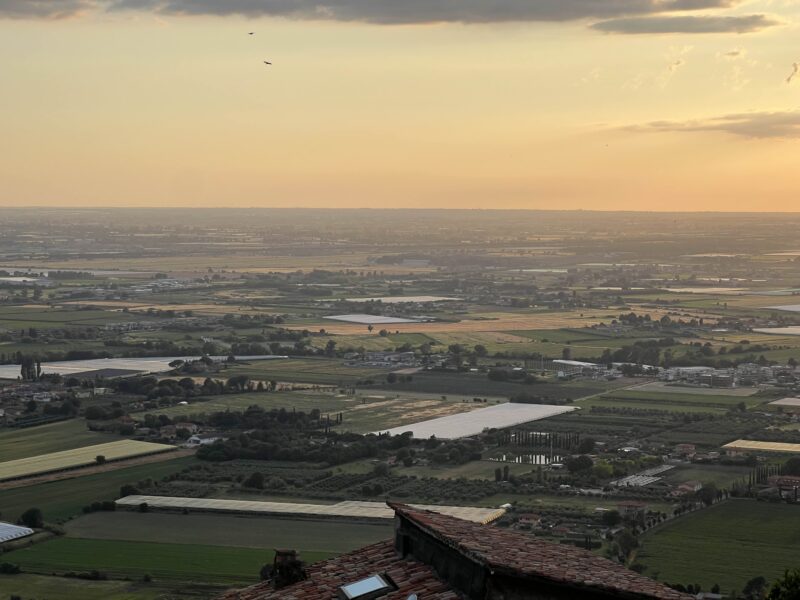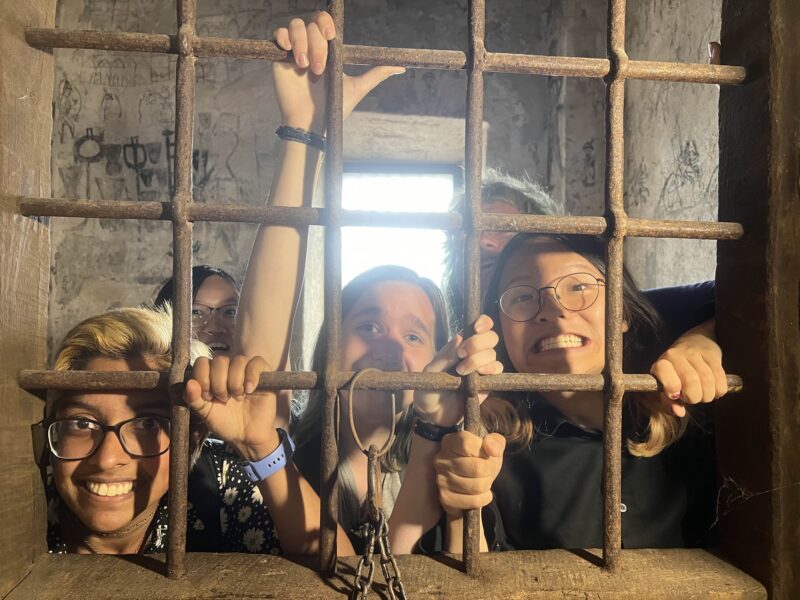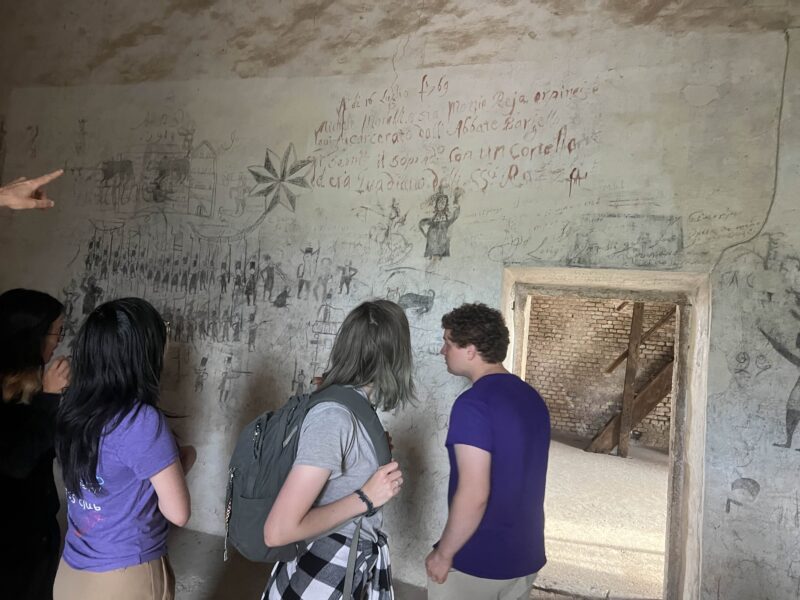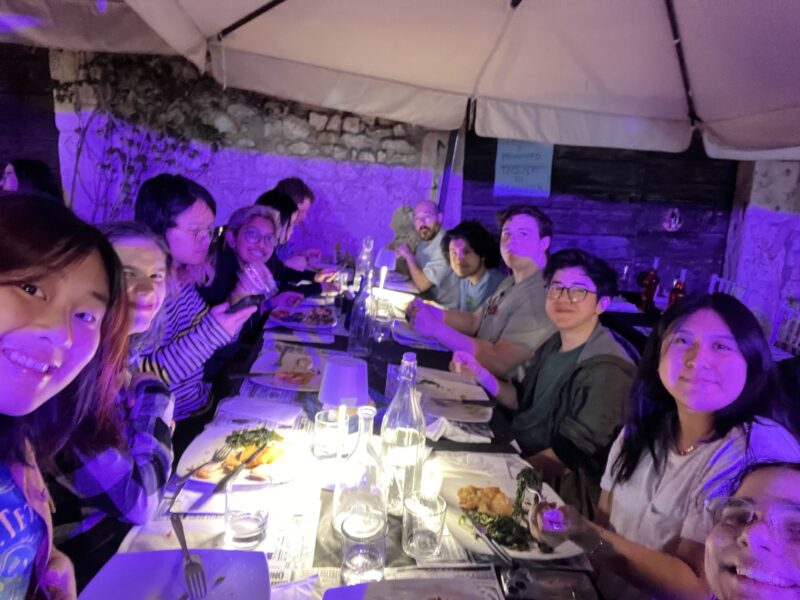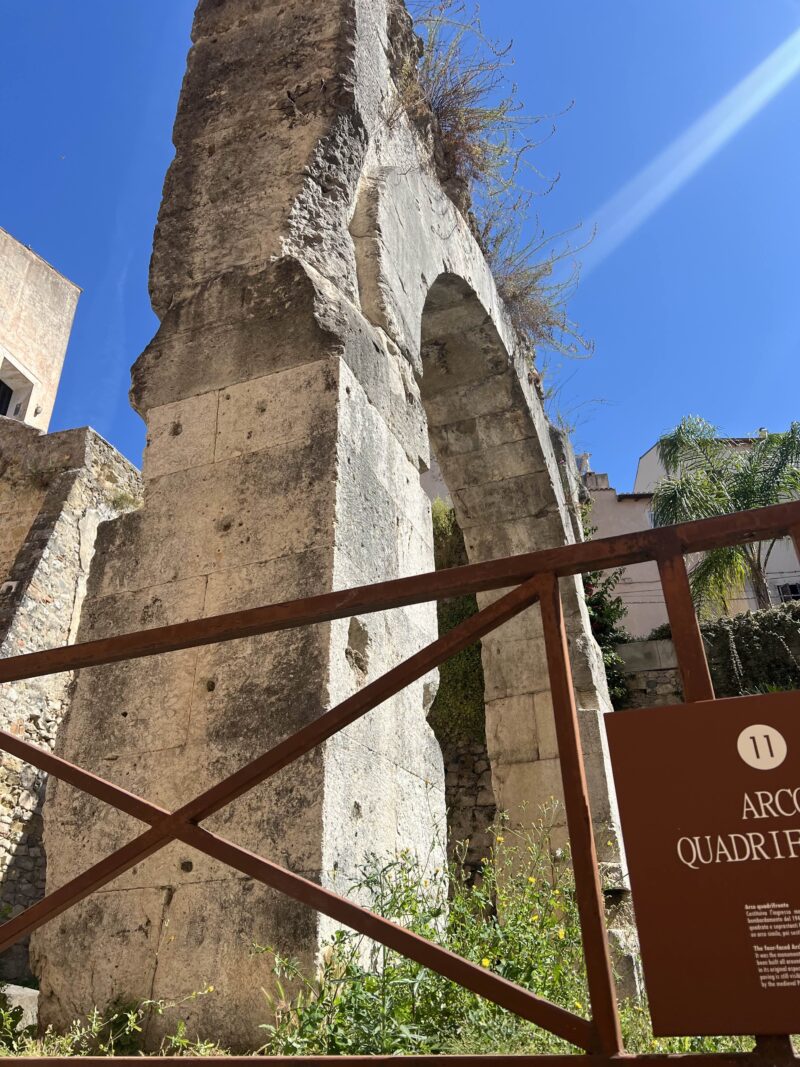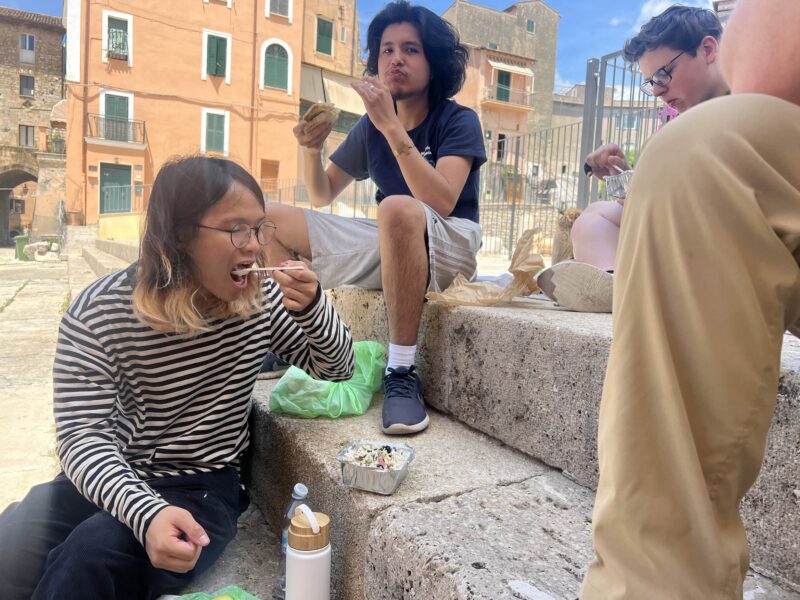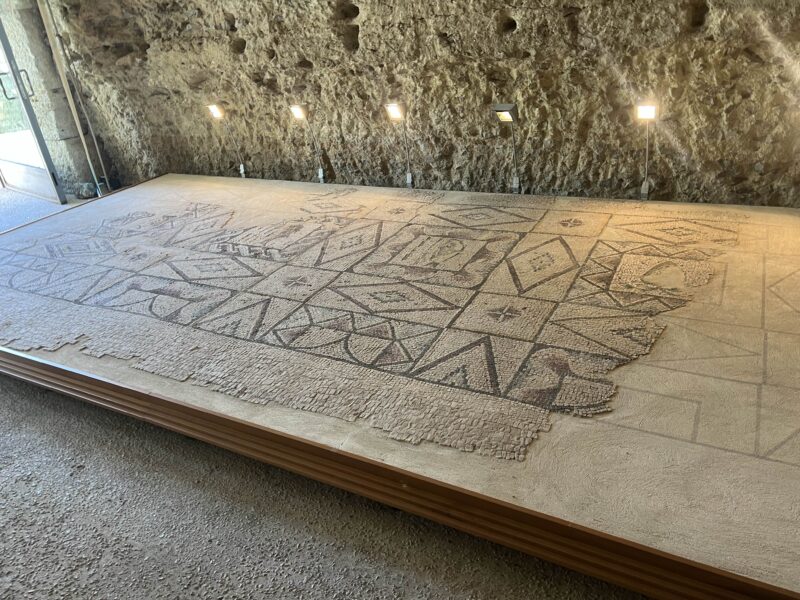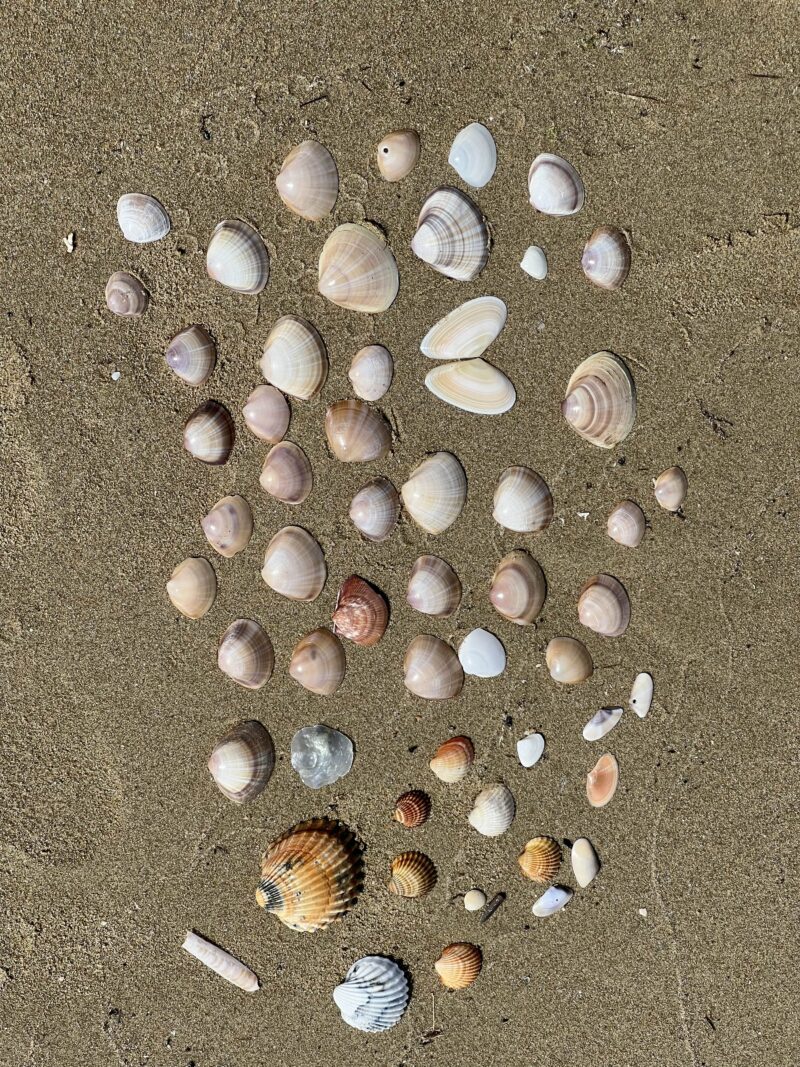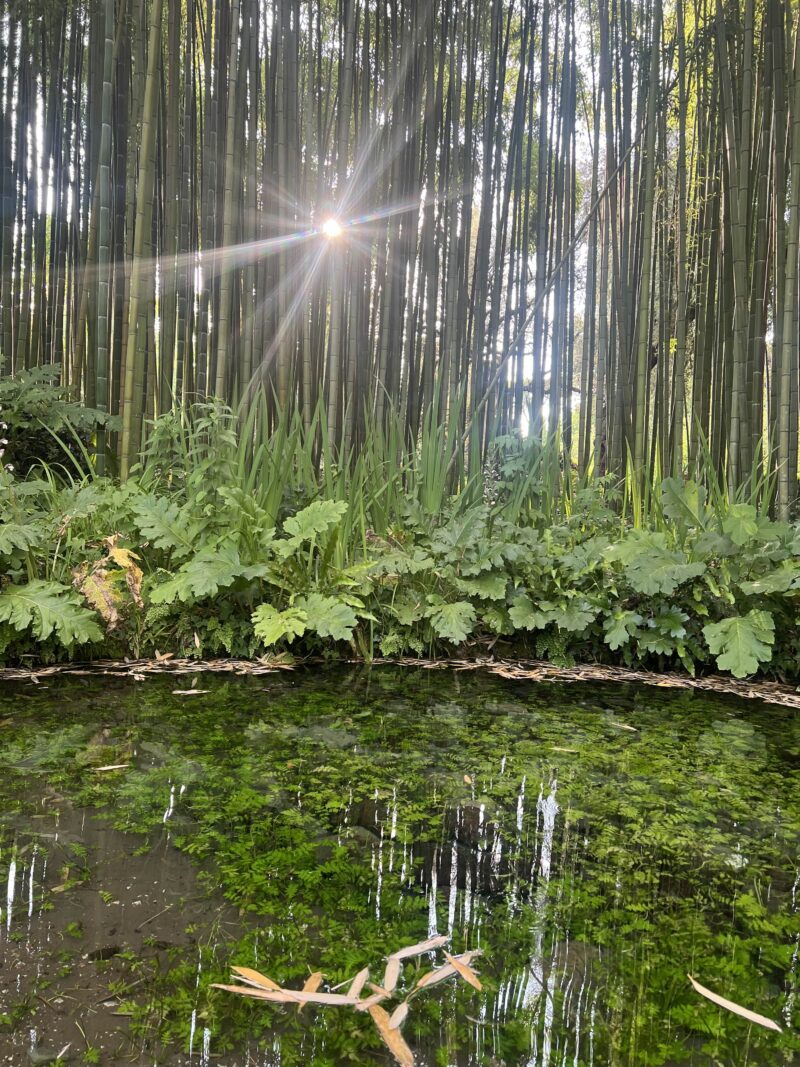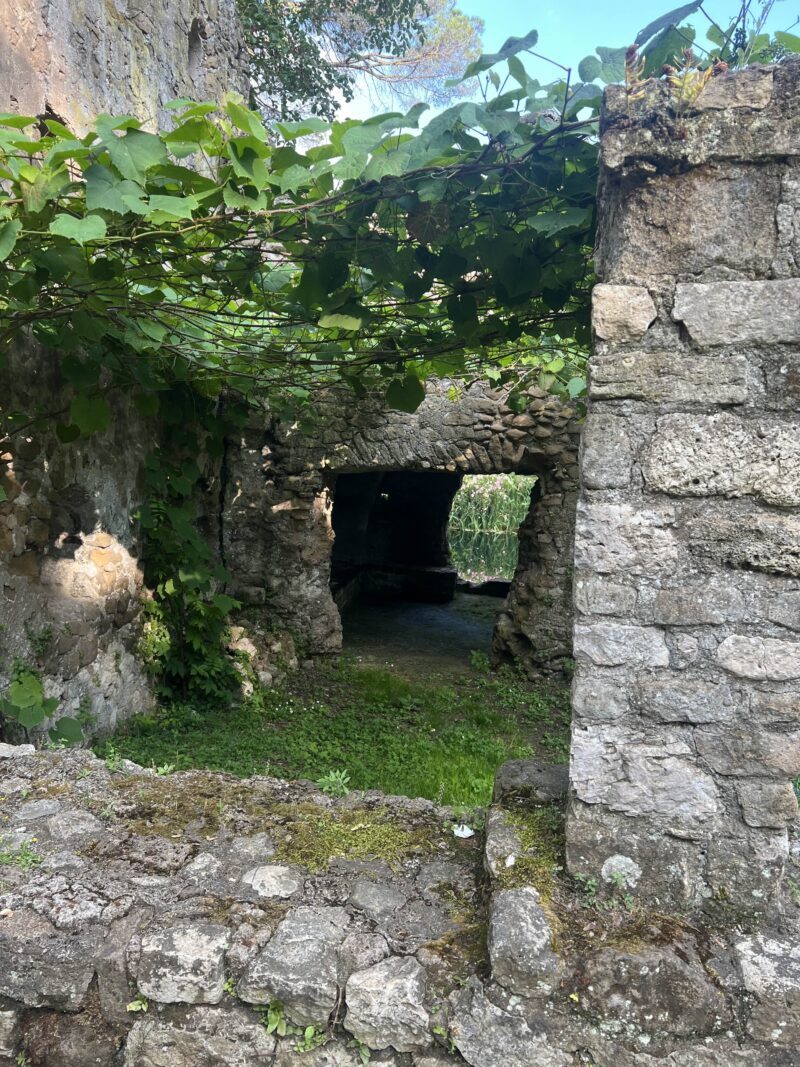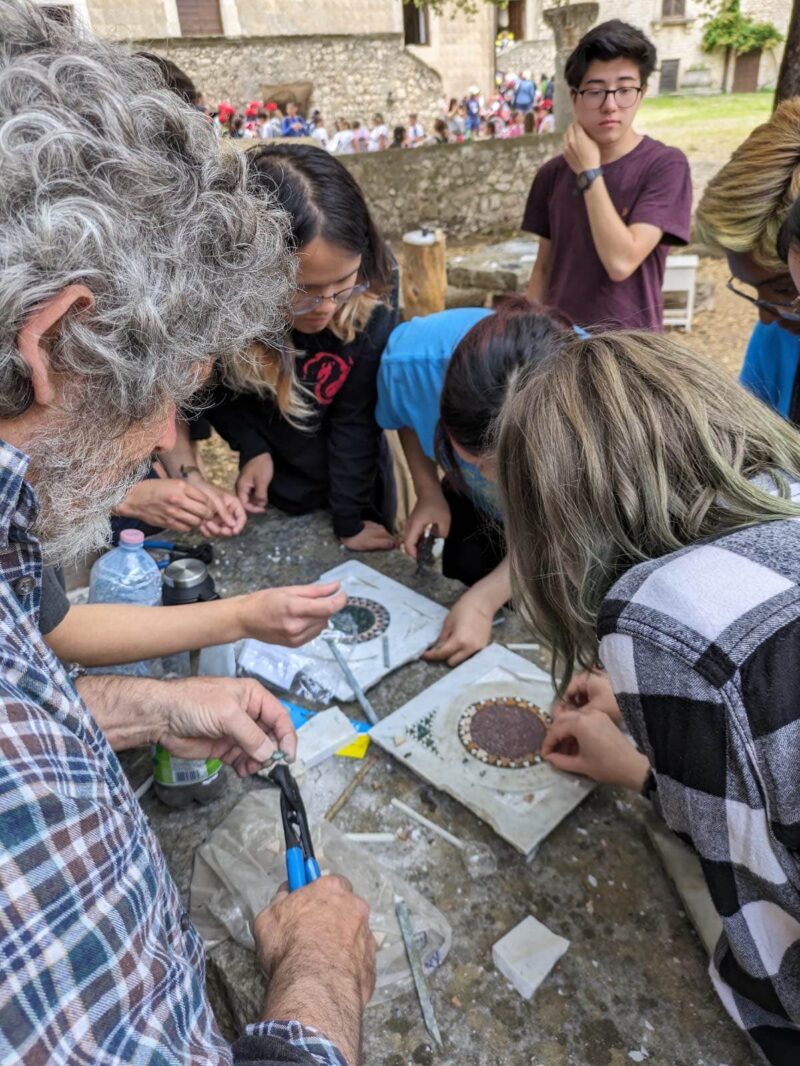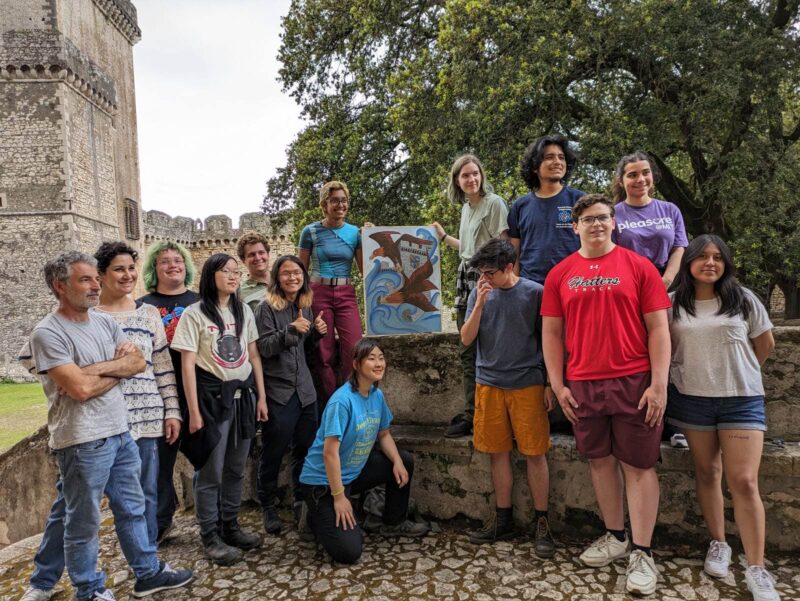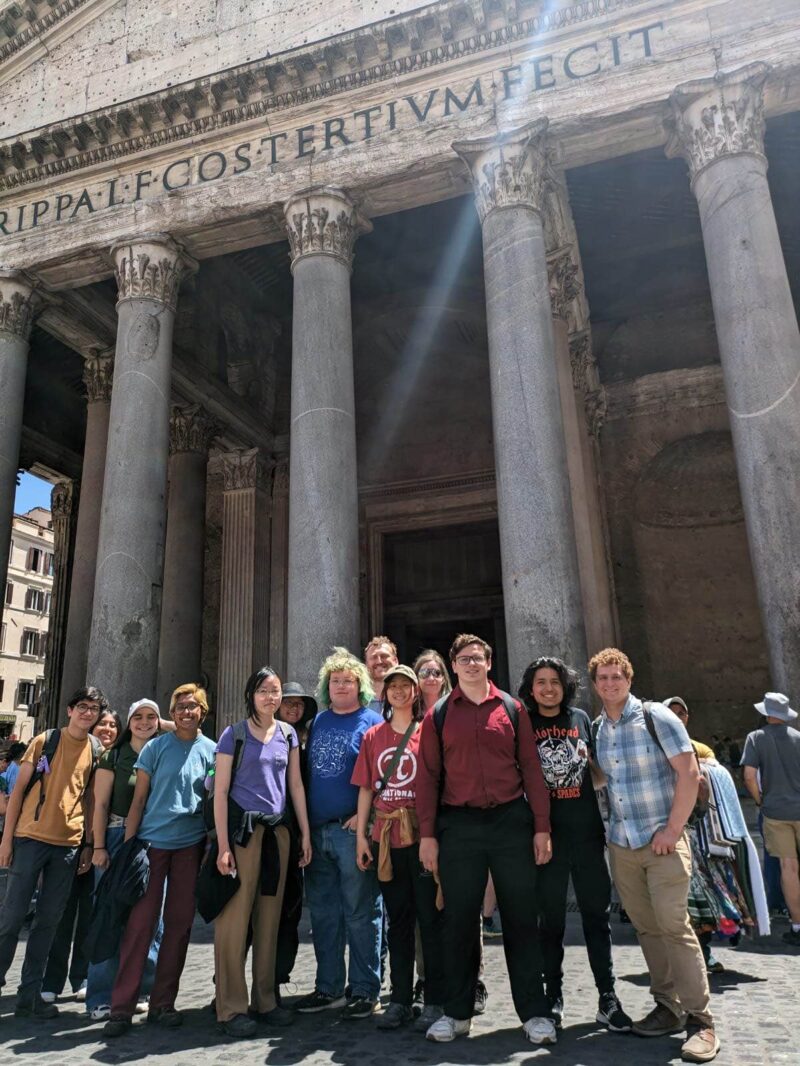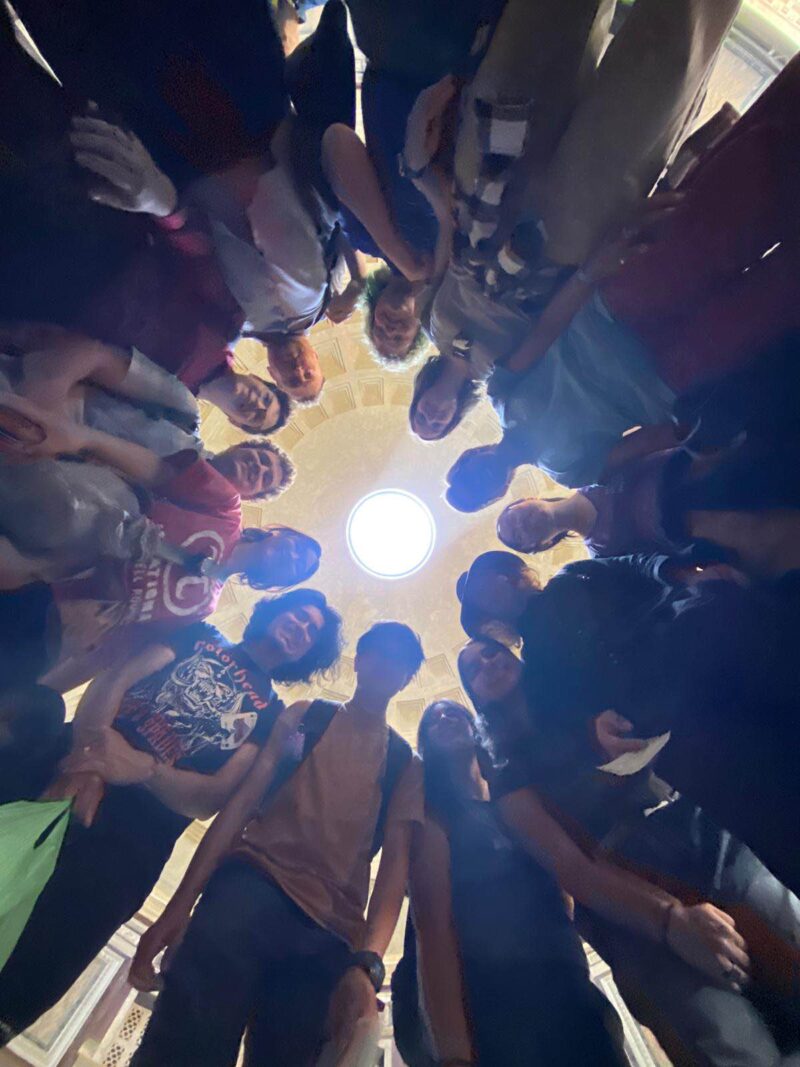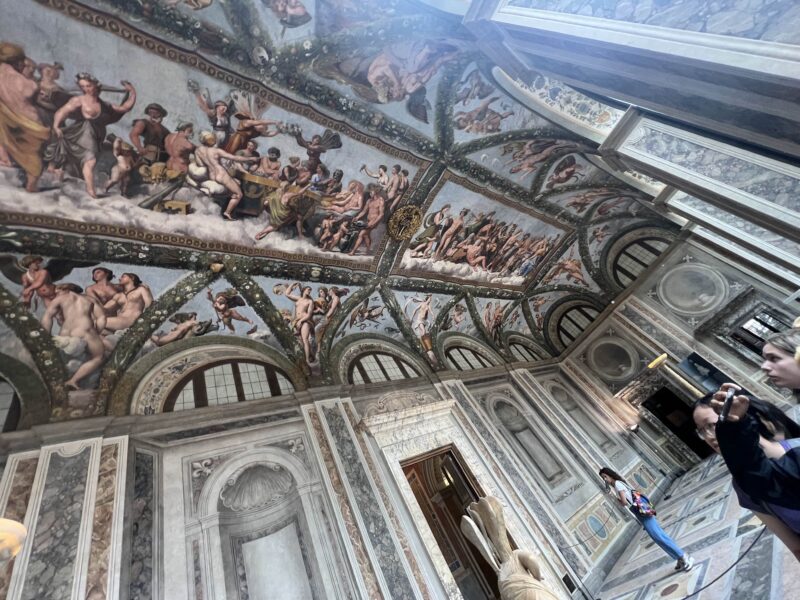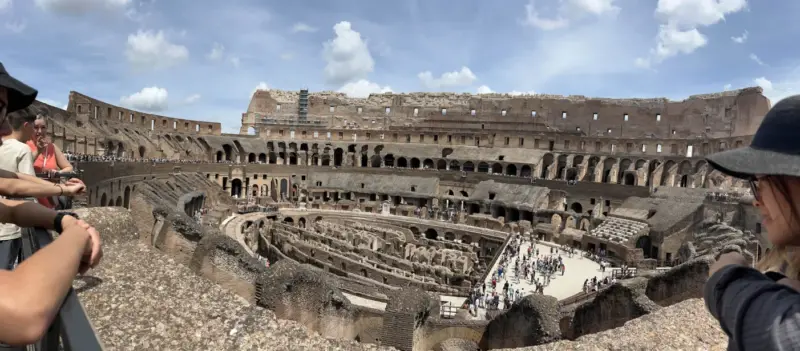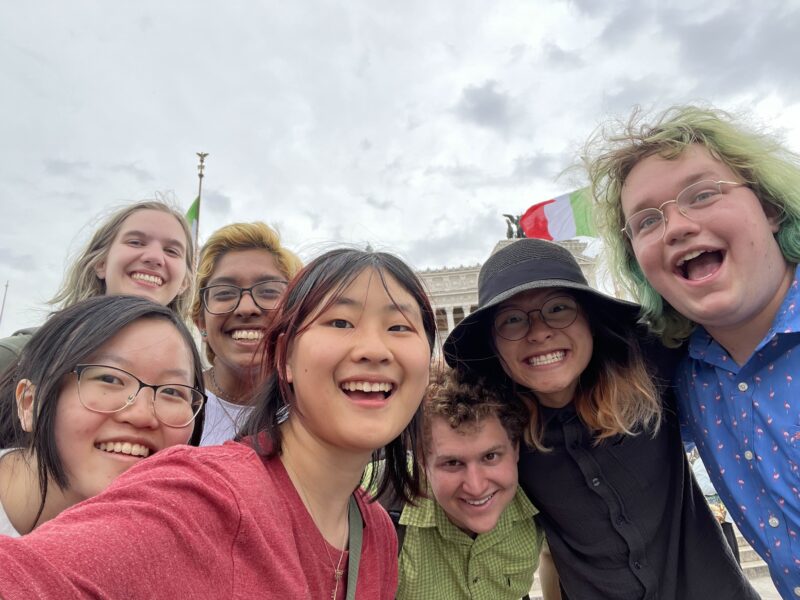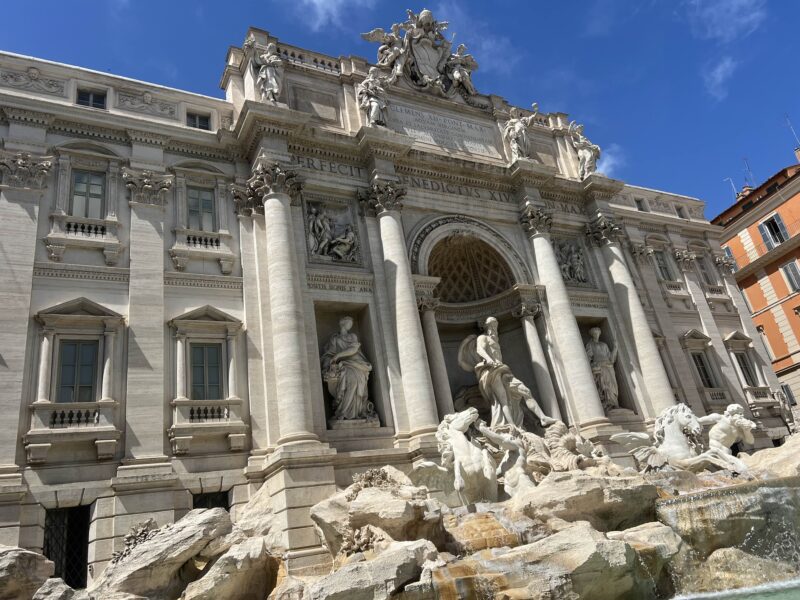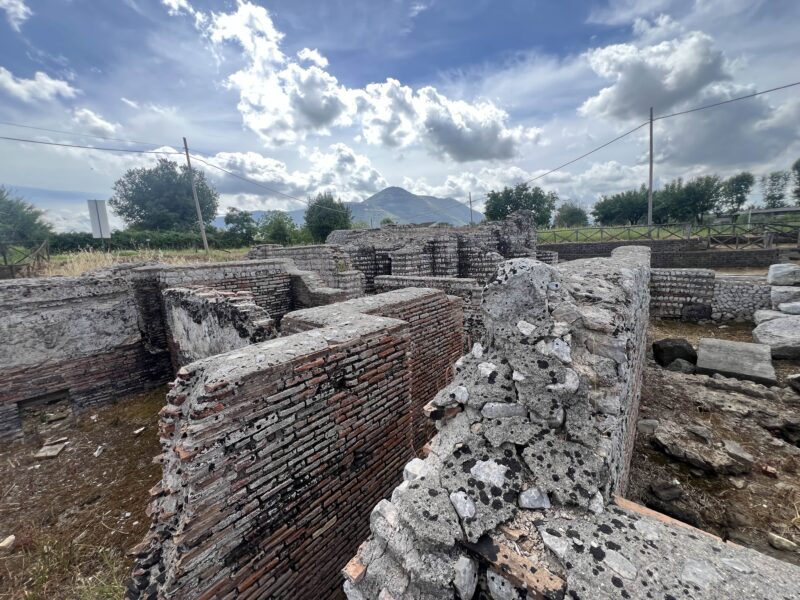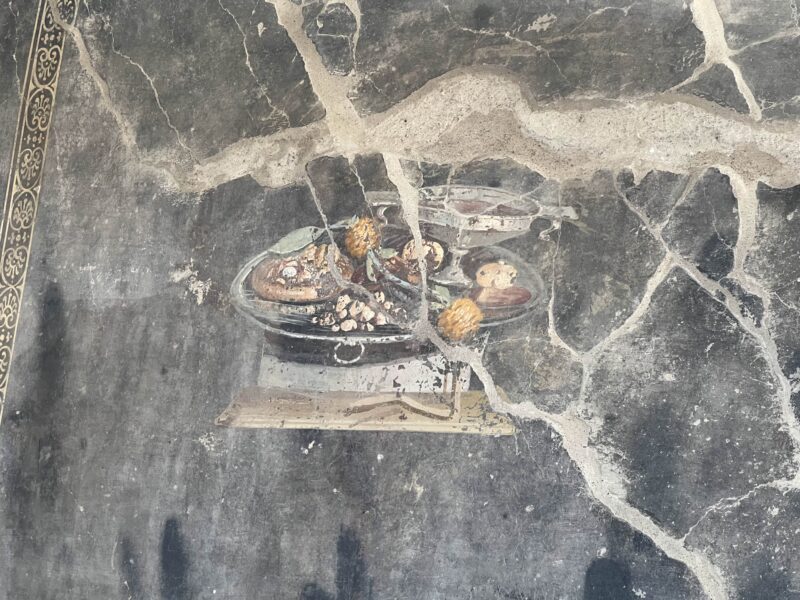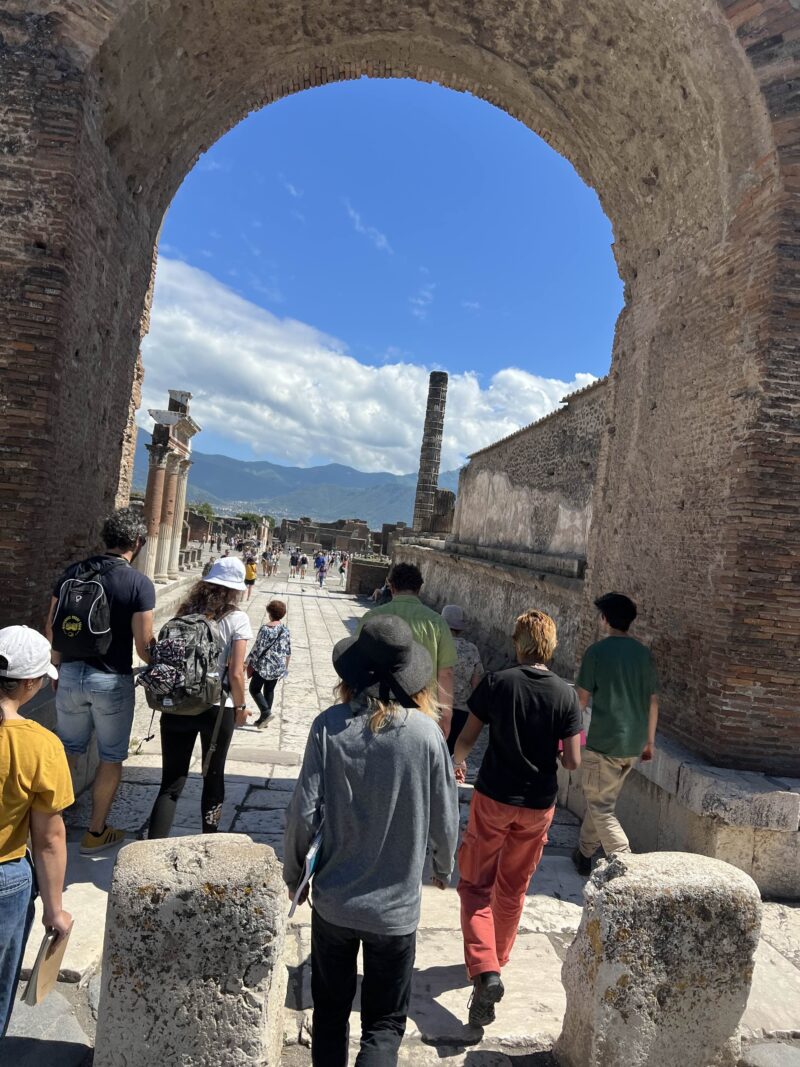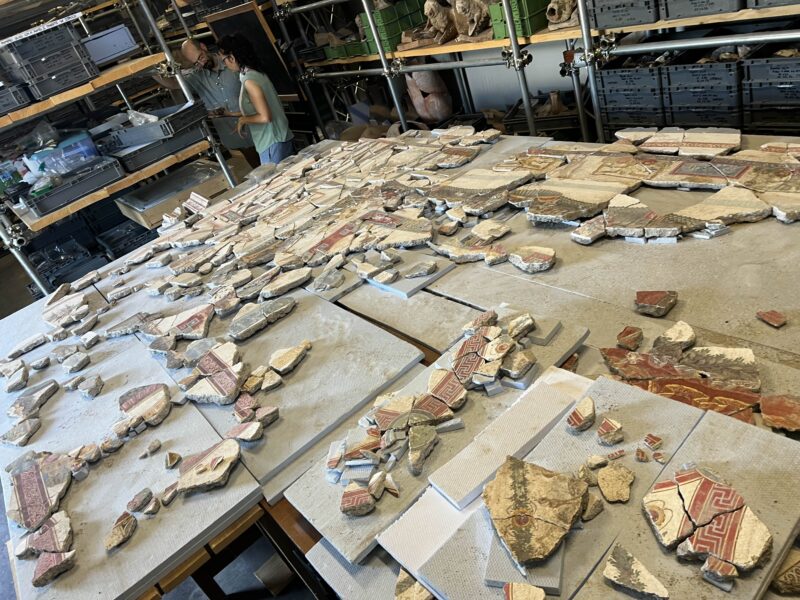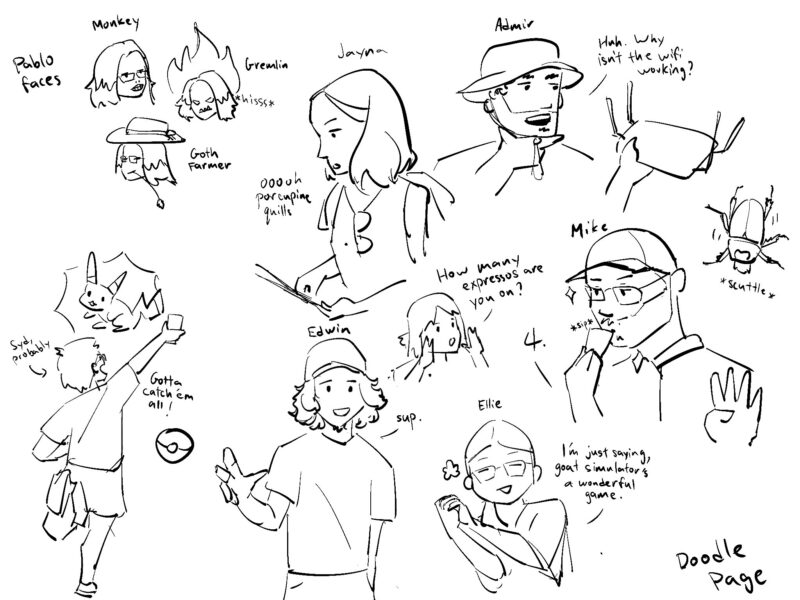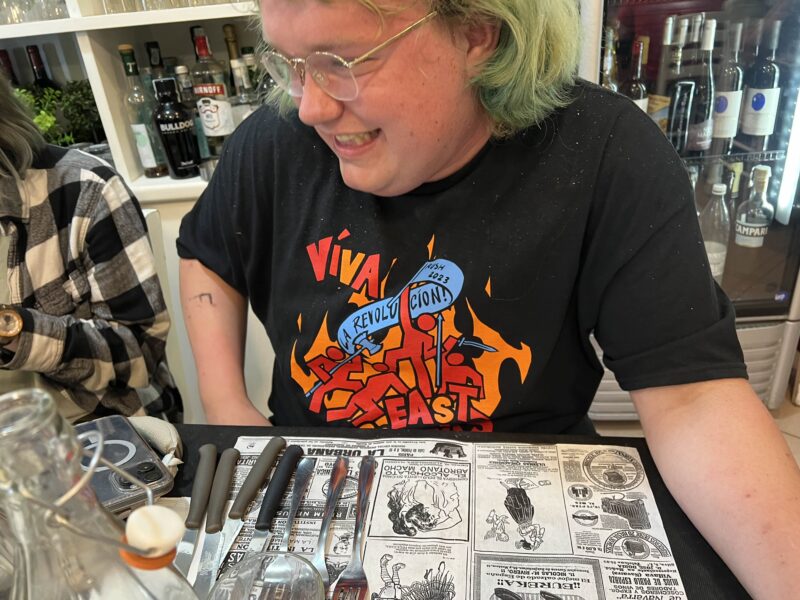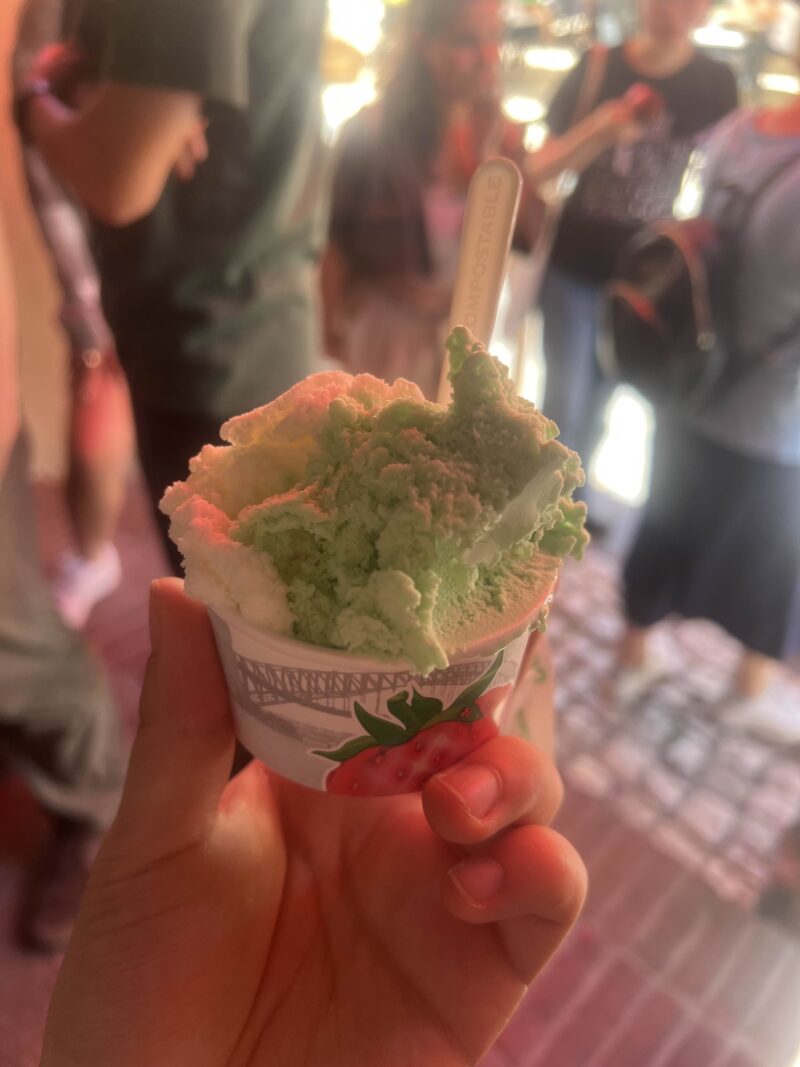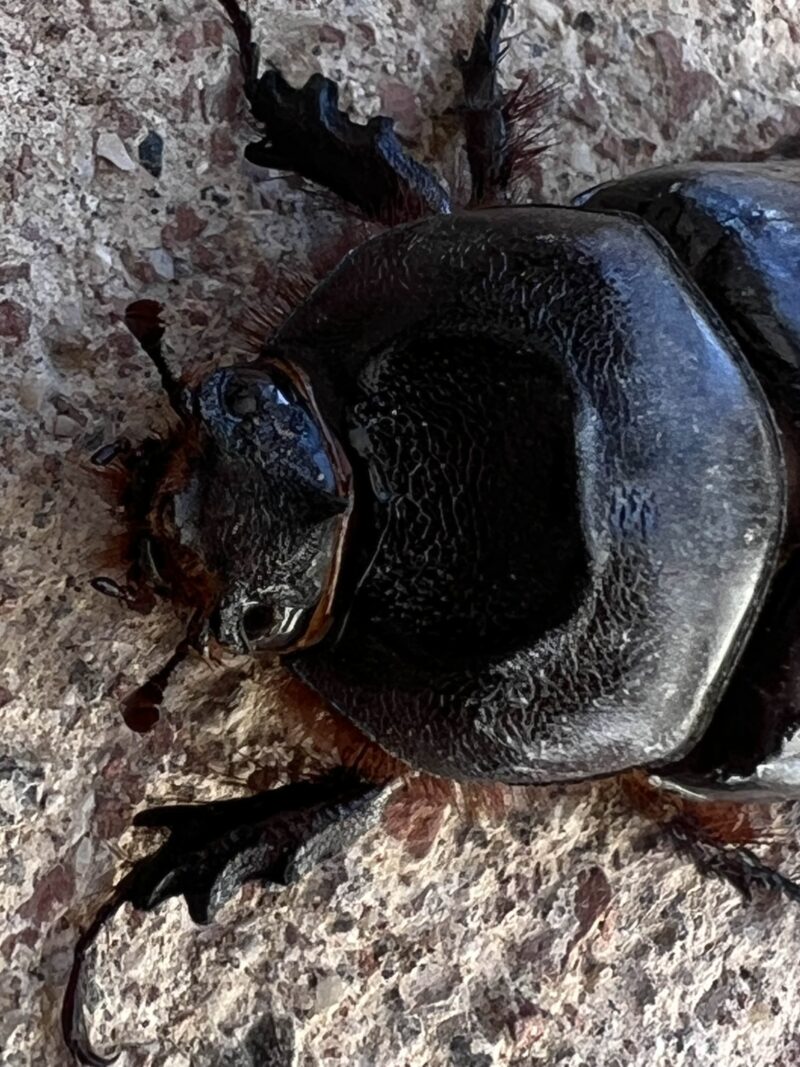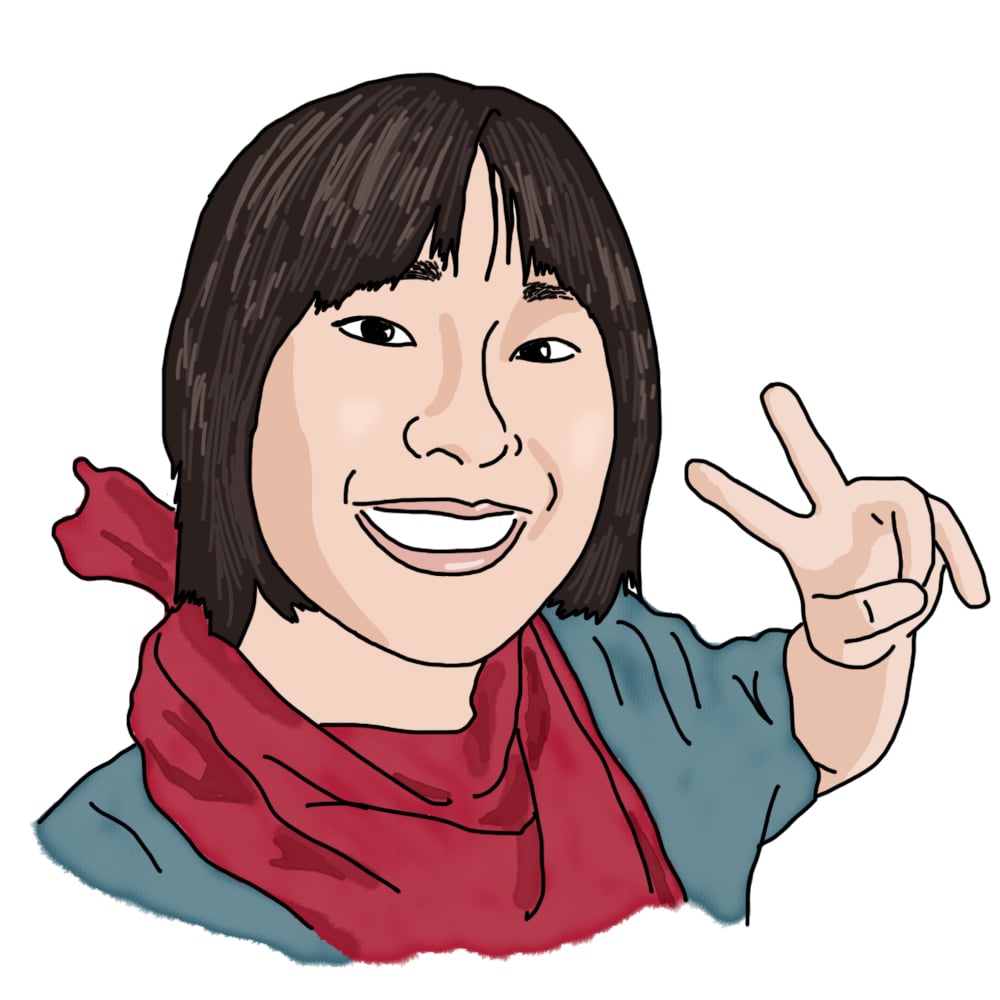
italy by Anika H. '26
research in pompeii
Hi! this is going to be a sorta long blog so here’s a tldr:
I went to Italy to do some light research and travelling, stayed in a castle, analyzed samples of roman concrete, learned how to mosaic and fresco, visited the colosseum, pantheon, and several archeological sites, did research on metal and mortars at Pompeii, set Tetazoo loose upon society, annoyed the frosh and local wildlife, and generally had a good time.
Last semester, I took (3.094) Materials In the Human Experience. It was one of the most interesting classes I’ve ever had, getting to learn about concrete and iron through a practical portion that involved building an arch and a smelting furnace. When they told us there would be a two-week research trip to Italy, I naturally jumped at the chance.
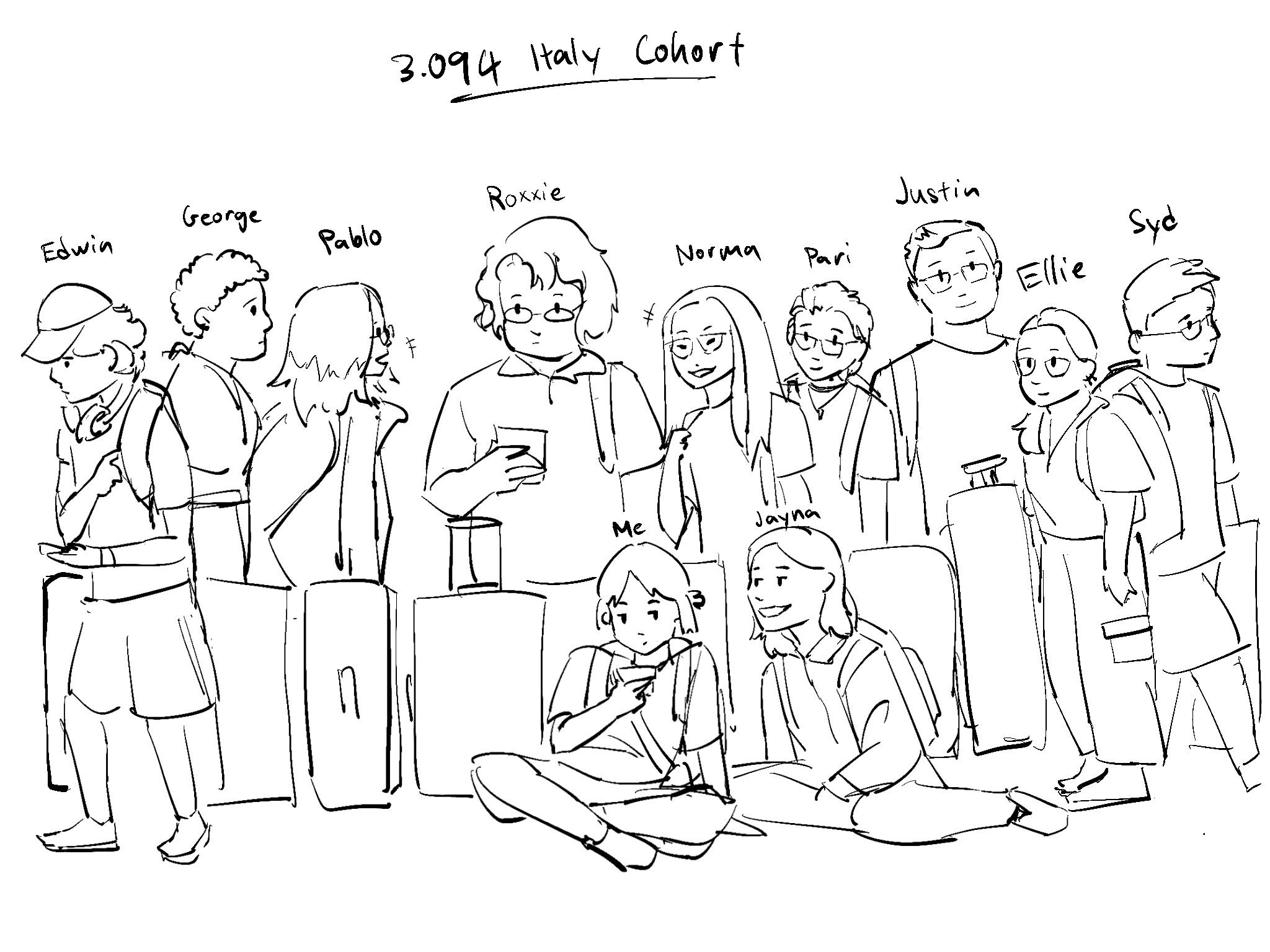
waiting at the airport
The two desginated adults of the trip were Admir and Mike, who each taught the concrete and metals portions of the class.
castle
“so anyway, we’re staying in a castle—”
wild cheering ensues
After landing in Italy, we took a bus ride down to Sermoneta, where we stayed in Caetani Castle for a week. We hauled our luggage up the cobblestone steps, smoothed by centuries of people walking through. I packed light though, managing to shove everything I could into a single backpack. The castle itself was beautiful. It had a moat filled with plants, a drawbridge, a well, secret tunnels, and hole above the gate to pour hot oil down on your enemies.
When we got there, we spent a good while frolicking around the courtyard and running around on the castle walls. I tried to get into every nook and cranny I could as soon as I got there, but most of the doors that went to the interesting places were locked, and it took me two days of begging Admir for him to promise to open the doors over the weekend.
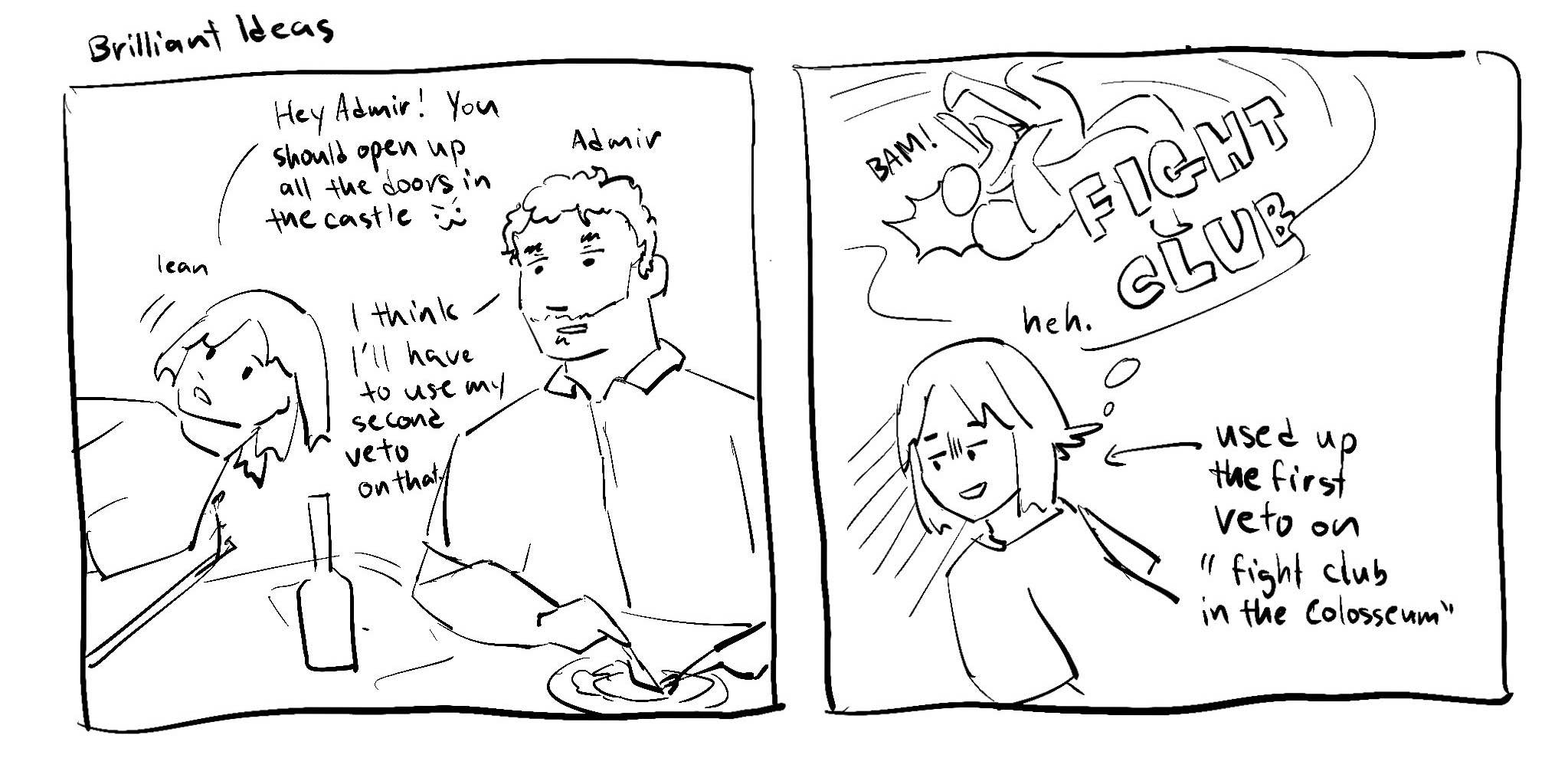
The tour of the castle was lead by the groundskeeper, Luca. He took us around the paintings and frescoes and showed us to the top of the little tower. While I would have liked to go to the top of the keep, the rickety stairs probably wouldn’t hold the weight of 13 people. We were shown around the stables as well and were told it held up to 50 horses at one point.
The small prisons held captured French soldiers during the Napoleonic Wars, and there were doodles all over the walls from them going on hunts and wanting to be freed. While we were there, I took this chance to briefly lock the frosh up in one of the prisons.
At night, I would often run up the stairs and spend a little while on the roof stargazing. Look up, and you’ll see stars and passing satellites. Look past the castle walls, and the town glimmers with light. Look in, and the frosh will be catching fireflies in the courtyard and standing on the edge of the well. The ground is warm and the air refreshing. I’ve caught myself falling asleep there.
exploring sermoneta
Sermoneta was a wonderful little town. One day during our free time, I took all the side roads I possibly can. It felt like a maze that was impossible to get lost in. No matter where I went, taking a flight of cobblestone stairs down lead to either of the main roads, and taking them up would eventually lead to the castle. The businesses and apartments were medieval style brick houses, often covered in lichen and flower vines.
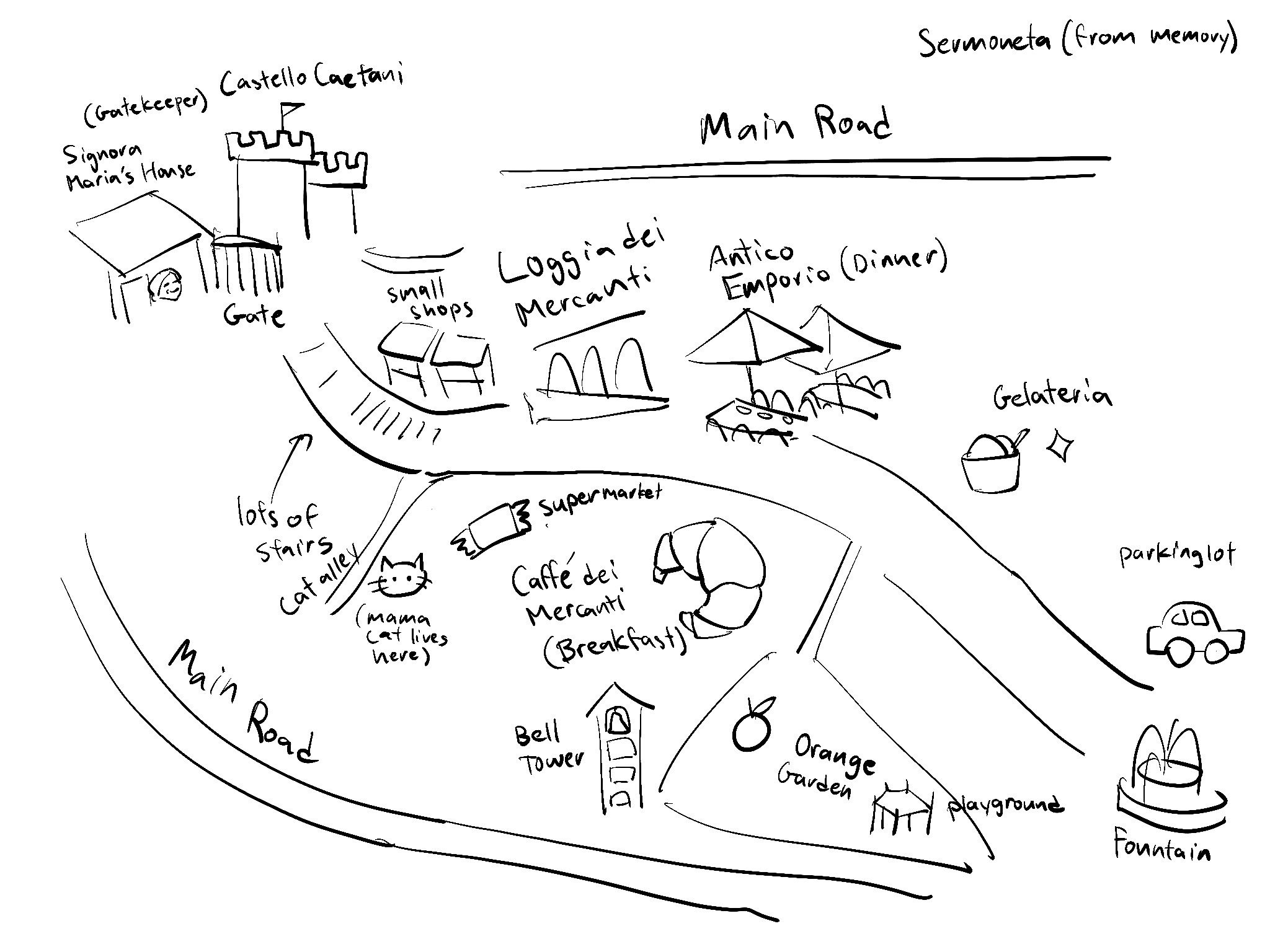
map of sermoneta drawn from memory
For lunch and dinner, we would go down to a little restaurant called Antico Emporio. Despite the size of the kitchen, it made mouthwatering two-part meals. The pasta and meat were exquisite, and I don’t think I’ve had better potatoes in my life. The language barrier was initially a bit of a struggle, but we picked up some basic vocabulary from our professors and were able to communicate preferences and dietary restrictions. Whenever the owner asked how the food was, I’d give her a double thumbs up. We got breakfast at the place next door. Despite our usual timeliness (lack thereof), we were mostly on time for breakfast and our other daily activities, and soon learned that Tetazoo time, which is 15 minutes to an hour late, was just Italian time.
There were a looooot of cats here. We saw stray cats about as often as we see squirrels around Boston. Most of them were quite shy, but I met an orange cat and a calico cat that learned how to beg for food quite effectively. The mama cat has four black kittens that were all a little skittish, and we’d find them scattering into planters and drain pipes whenever we walked by.
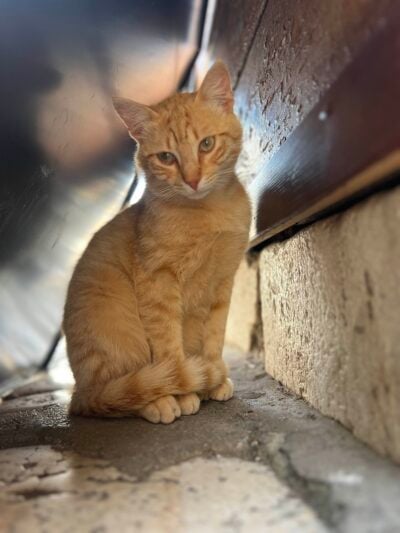
kitty!
locations!
Terracina was the first of the archeological sites we went to. On the hike up, Admir asked us to point out everything Roman until we got far enough that there were entire sites full of Roman ruins. We were lead inside the base of an old temple, where restored mosaics were displayed and got toured around the ruins of the Capitolum. We took a few samples of mortar from the building (with permits of course) and wrapped them up to bring back. As Mike ran off to fuel his coffee addiction, the rest of us settled down for lunch, only to find half the lunch bags absolutely covered in oil from the rice. We spent the rest of the day at the beach. I was initially whining about the freezing cold water, but ended up spending the most time in the water collecting shells.
In the afternoon, we visited the Ninfa Botanical Garden, created by the last remaining members of the Caetani Family. The gardeners there have the unique job of preserving both the ruins of the town as well as the overgrowth of the garden. Its trees grow extremely fast in its unique microclimate, towering at just 150 years old. It stays cool during the summer and warm during the winter. The guide also seemed really excited showing us around. Every other spot was “the most beautiful corner of the garden”, and for good reason I think. There were fish in the river, clear springs in the bamboo forest, and wild climbing roses enveloping tall trees. The Caetani who planted the garden was also a painter, making it so the garden changes color every two weeks throughout the year. Back on the bus, we joked about leaving Mike behind since he was the last one on, and he said he would be happy to stay.
Back in the castle, we put the samples of the mortar in an instrument called an FTIR (Fourier Transform Infrared Spectroscopy). By loading on a small sample of a material, it produces an infrared spectrum of its absorption or emission, which can then be used to identify it from an online database.
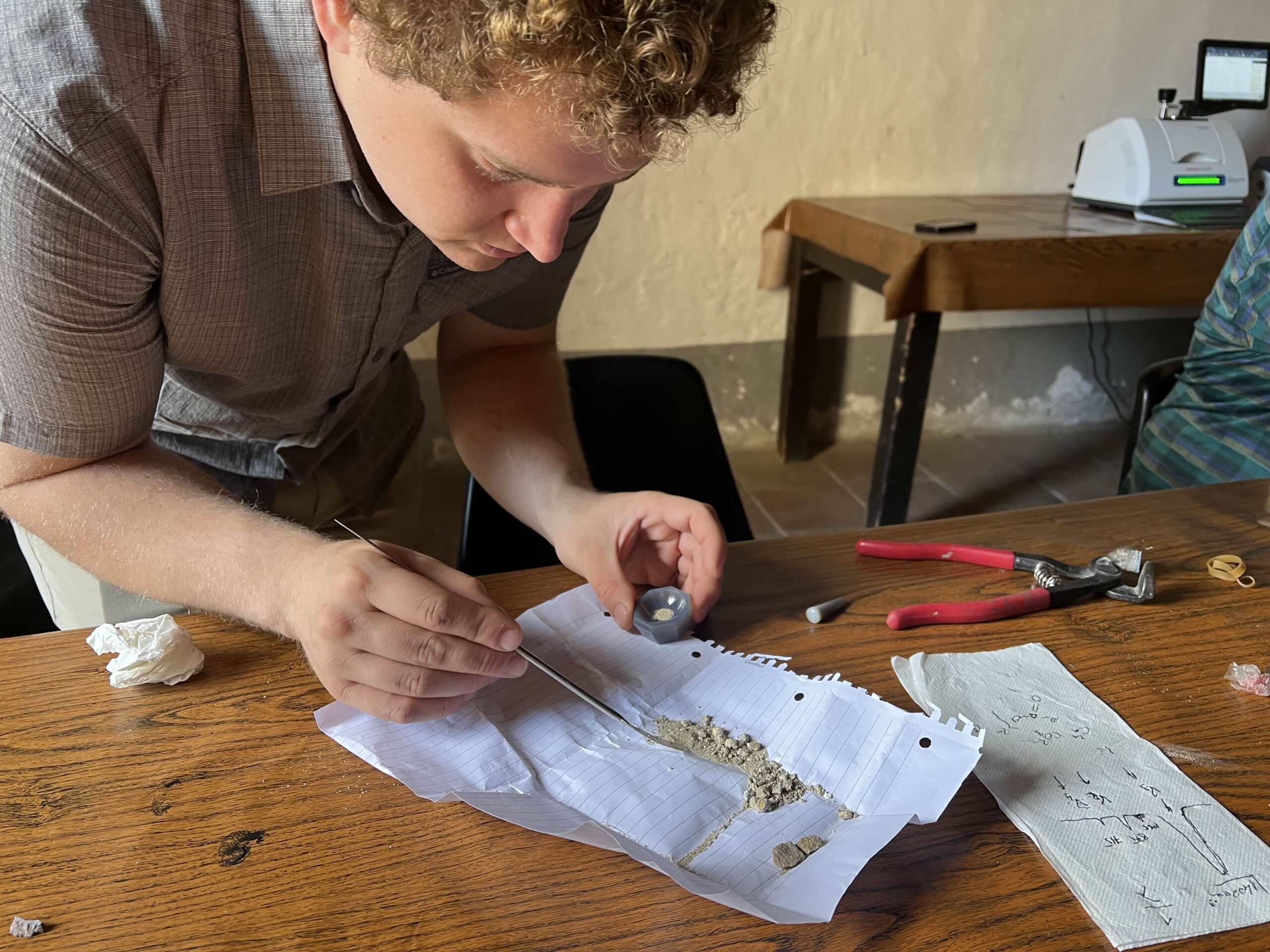
george prepares a sample for the ftir
The next two days, we learned how to mosaic and fresco from restorers and artists. We learned how to cut marble, mix mortar, use quicklime, and operate a thermal camera. We made two different styles of mosaics and a fresco of Caetani Castle, adorned with waves and eagles, the two symbols of its family crest.
We couldn’t stay in Italy without visiting Rome, so we took two days to go sightseeing. We were skipping lines at both the Pantheon and the Colosseum and getting tours with real archeologists that have done excavation work there. It felt like everywhere we went, Admir “knew a guy”. Though I know it must have taken an incredible amount of work to plan the trip and make reservations, it still felt like magic every time we were let in through the staff entrance or led around a sea of people in line. I tried my best to stick near the front and ask questions. I remembered seeing pictures of these places in my middle school history textbooks, but seeing the breathtaking Roman architecture in person was an experience on another level. There was definitely theme of “medieval folk recycling Roman architecture”, which I found amusing. The Colosseum was covered in holes from where the metal supports were stolen, and the bronze overhead support beams in the Pantheon were melted to make cannons and replaced with wood. There were still a lot of the sites left to preserve and uncover. When we stopped for lunch at a local park, I would see bits of arches sticking out of the grass.
In the second half of these two days, the lot of us were set loose in Rome to wander. We got gelato at a place with 150 flavors, and indecision paralysis took me for 10 minutes trying to figure out how to select only two. In line, I discussed the volumetric difference between getting a cup or a cone, and couldn’t visually discern the better option. Mike got several more expressos, half of us went Pokemon chasing, and the other half (Tetazoo) ended up at the Tomb of the Unknown soldier. The full cohort visited the Trevi Fountain as well and made wishes upon a coin toss.
Over the weekend, we hit Priverno, an archeological site where Admir conducted much of his research on Roman concrete. Intermittently swatting each other with millet grass, we walked the broken mosaics through the ruins of a Domus, a traditional Roman house. While the content was really interesting, I couldn’t help but get distracted by the ridiculous number of snails covering the fenceposts and signs. We went up to the archeological museum for lunch and sat down at a small restaurant. There was one guy. He was the cook, the server, and the cleaner, and it was the best artisanal pasta I’ve ever had in my life.
pompeii research
Aside from Caetani Castle, I think my favorite experience was doing research in Pompeii. It was the largest archeological site I’ve been to by a massive margin since it used to be an entire city. We stayed at a hotel very close to site and took a back entrance into the lab every day.
I’m not allowed the share pictures of the lab, but they had mountains and mountains of bones and artifacts. Chiara, one of the researchers there, showed us around. On one shelf were the skulls and 3D facial reconstructions of a family found in the remains. They found animal bones from dinners past and fruit offerings at temples. There were turtle shells, carbonized remains of fabrics, and jars upon jars of pigments. All of us came out of there bright eyed and bushy tailed, ready for the next three days of research.
I thought walking the slippery cobblestone streets of Sermoneta were bad, but Pompeii was worse. With exception for a few sections of main road with wide sidewalks, we walked on horse-drawn cart roads. With the unevenness of the stones, I’m sure the horses must’ve had really strong ankles. We split up into groups based on research topics. In the first half of our first day there, I didn’t really do much, and out of boredom, I went to check on all the others. I spent most of my time with Admir and the mortar group. They were in Larario de Achille, examining piles of gypsum and the content of the different layers of a half finished fresco. In another room, Marco and the Egyptian Blue group were taking and processing pictures of frescoes with modified night vision goggles to observe the florescence of the unique pigment. A few feet further, Gianni and the photogrammetry group were watching a loading bar, waiting for their scans of the room to render. Right before lunch, I ran over to George and Pablo, who were using the FTIR on samples from the lab. They were originally supposed to look over a paper from the 1800s regarding a mortar mix with lime, charcoal, and urine, but nothing much came of that.
In the afternoon, I started my research in the metals group with Edwin and Mike. We used another instrument called an XRF (X-Ray Fluorescence) gun to analyze a bunch of metal artifacts. It measures the emissions of a material that’s been excited with an x-ray beam and then determines its elemental composition. We did most of our work in a huge warehouse full of larger artifacts with shelves filled floor to ceiling. I made quick doodles of the objects as Edwin took pictures with Mike’s camera, which has an incredible microscopic zoom mode that lets it take detail shots. When the gun beeps after 90 seconds, Mike reads me the values he got and I jot them down in my notebook. Rinse and repeat for the next 40ish artifacts. We ran through lead pipes, ceramic fountains, and bronze vessels of all sorts.
We took a particular interest in the lead pipes. Since they were rolled up lead sheets, we XRFed the seams to see if the Pompeiians used a solder (they did). It was a lead-tin solder. The joints between pipes and valves had a different solder with an even lower melting temperature. When Mike went to get data in a slightly less structural area, I begged and bargained to go along, and got to see part of the hot water distribution system. On Friday, we presented our findings from the past three days.
Finally free from work, some of us decided to browse the Pompeii gift shops. I knew the Romans were like this but I was still unprepared for how many dicks I would see. There were rows and rows of bronze, wooden, and plastic dicks, dick can-openers, dick key-chains, and so on. Despite trying to walk along, the shopkeeper kept trying to show me more. I ended up going to the supermarket instead.
shenanigans
Since many of Tetazoo’s frosh joined 3.094 thanks to Anhad’s recommendation, a good portion of the trip was consisted of our shenanigans. Admir was constantly looking out for us like a concerned father, telling us not to stand on the edge of the well or get too far deep into the water. He nearly screamed when I tried to sit on the second floor railing at the hotel in Pompeii we stayed at, and seemed very worried about our steak knife sword fights at the dinner table. Like last year’s cohort, we started calling him Dadmir. Mike, in contrast, was relatively chill about us poking around. At the beginning of the trip, I got designated as town crier for addressing the two kings of the castle (Mike and Admir), imploring their majesties to graciously open the castle gate. In other words, I was being a pain in the ass and yelling from the courtyard to the third story window to get Mike. The lot of us would hang out together during free time and meal times. These were the times Roxxie collected a pile of cutlery at the dinner table, George curled up from getting teased, and Mike learned of me and Pablo’s pet leeches.
For dinner at Pompeii, there was this weird hallucination of a restaurant we went to. It wasn’t that bad, it was just everything was ever so slightly off. They served Pepsi in glass bottles with plastic caps, they had a DJ playing remixed US pop songs(the set wasn’t even working half the time), it was supposed to be middle-eastern themed but only served Italian food, and had an odd way of serving food. As one of the others described, it felt like an alien trying to run a restaurant like a human and not getting it quite right. Roxxie was always super excited to eat here and would not stop laughing once we sat down.
As much as I enjoyed terrorizing the frosh, I also thoroughly enjoyed poking at the new wildlife around me. Aside from petting the stray cats, I kept trying to catch lizards and pigeons. There were orange beetles and fireflies at Sermoneta, I found two rhinoceros beetles in Pompeii. On the way to lab, I scooped up a dead Giant Asian Hornet and put it in a plastic jar that Chiara gave me. I plan to either CT scan it or take pictures of it under a scanning electron microscope.
This trip was solidly the most fun I’ve had the entire year.
Thank you Mike, Admir, and everyone who made this experience possible.
Special shoutout to Ellie for being an awesome TA <3

